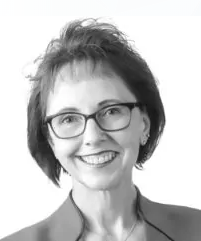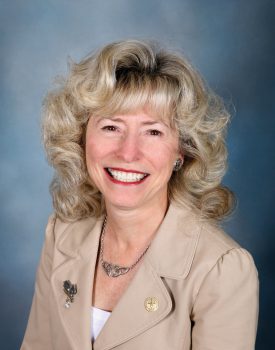85 Years of NBOME | Women Leaders’ Perspective
September 26, 2019
Sheryl Bushman, DO, served as our Chair from 2005-2007, overseeing a great investment in development for the board, the organization, and its products to guarantee their validity at a time of increased scrutiny. From 2011 to 2013, Janice Knebl, DO, came on as chair, and oversaw the creation of the Blue Ribbon Panel to modernize COMLEX-USA to a competency based model (which we’ve just finished implementing this year). Both these women have had their own distinct impact in shaping of our organization, they also happen to be the first and second chairwomen of the NBOME.
We sat down with these two important figures to hear their perspective of the NBOME’s 85 year history, and their own part in it.
When AT Still opened the first COM in the 19th century, it was pretty radical that women were able to study there. Famously the first person to take the NBOME’s first exam was a woman (Margaret Barnes). How do you feel about the state of women in the NBOME, and in osteopathic medicine on the whole? Are we living up to the legacy?
Dr. Sheryl Bushman: The NBOME has always treated women with the utmost respect. It is part of our DNA. I recall before becoming Chair they asked “What should we call you? Chair-man Bushman doesn’t sound appropriate.” We’ve simply called the position “Chair” ever since. Even to this day, I see committee Chairs purposefully review the demographics of their members and try to generate membership to reflect the profession considering race, sex, age, location, etc. This encourages the NBOME’s culture of collaboration, intellectual stimulation, respect and sensitivity. AT Still would be proud to see how far we have come.
Dr. Janice Knebl: I am so very proud that while I was NBOME Chair, the Board of Directors was composed of 40% women. As I participated in the Coalition for Physician Accountability, which included all of the other major physician groups, we had the largest percentage of women physicians and board members than any of the other organizations. It is critical for the NBOME Board to reflect the “face” of osteopathic medicine which is on average about 50% women in every College of Osteopathic Medicine Class.
What do you think women bring to the table, particularly when it comes to leadership roles?
SB: Whether we are men or women, we all come to our leadership roles with a different style. I am certain that my role as Chair helped me develop my leadership skills in being able to provide difficult news clearly, directly, but gently.
JK: I believe that women bring empathy, strong work ethic and collaboration to osteopathic medicine. Of course, these are generalities that don’t apply to all women. When working with women leaders in osteopathic medicine I have seen them be solution focused and being inclusive of diversity of opinions. Most of the women leaders I have worked with have given over 100% to their positions.
What does the NBOME do well when it comes to promoting gender diversity in leadership, and what do you think we could do better?
SB: As I’ve said, the NBOME has been committed to reflecting the demographics of the osteopathic profession, even as I first became involved in 1989. They do a good job. If there is a gap, I imagine it’s due more to a lack of awareness among the candidate pool than a lack of inclusivity on the NBOME’s part. Perhaps identifying a way to advertise or communicate opportunities could improve participation.
JK: NBOME intentionally recruited women for the Board of Directors during my tenure as Chair. In order to have the gender diversity, there needs to be an intentional approach by inviting and encouraging participation in all aspects of the organization by women. There needs to be an understanding and respect that women may have other roles and responsibilities during their careers that will change to enable them to participate at different times in the organization. NBOME could consider supporting a leadership track for women and men who are identified for future leadership roles within the organization.
How do you look back on your experience with the NBOME?
SB: Among all the leadership positions I’ve held in my career, I treasure this position the most for several reasons. The NBOME is made up primarily of volunteers with great affection for the osteopathic profession and the desire to give back. Unlike many professional organizations, egos are left at the door. Patient wellbeing and student fairness are always at the forefront in our decisions, from test development to the cost of exams, etc. Working with colleagues across the entire spectrum of medical care for this organization is a true blessing.
JK: It was a true privilege for me to serve as an officer and Chair for the NBOME. Being involved with the NBOME and having the opportunity to be a leader in assessment for osteopathic medicine has been a true highlight of my career as an academic osteopathic physician. The mission of the NBOME to protect the public is noble and necessary for the public good and for all of us as patients.
Contributors

Sheryl Bushman, DO, currently works as Chief Medical Informatics Officer at Optimum Healthcare IT, and contributes to on our COMLEX-USA Level 2-PE Advisory committee. She served the NBOME’s Board Chair from 2005 to 2007.

Janice Knebl, DO, currently practices and teaches Geriatric Medicine in Fort Worth TX, in addition to chairing our COMLEX-USA Composite Examination Committee. She served as NBOME Board Chair from 2011 to 2013.


